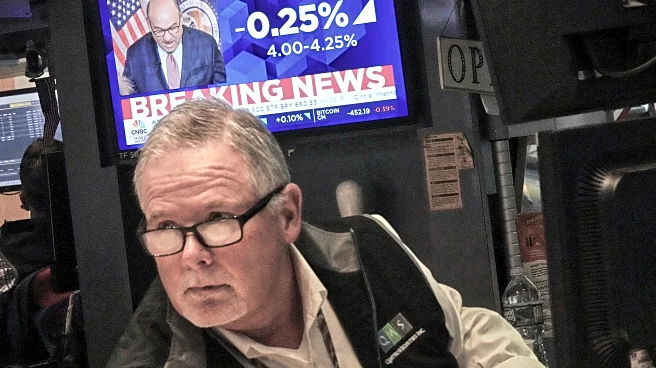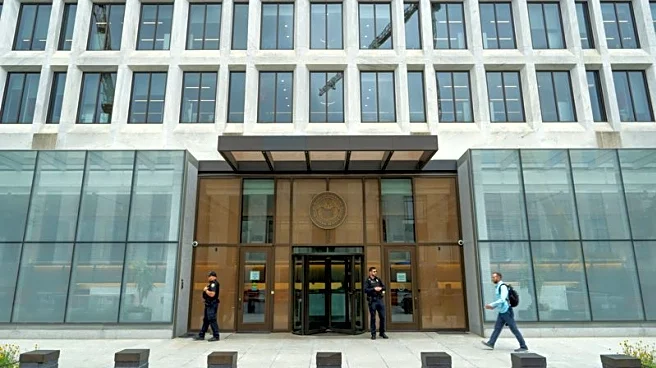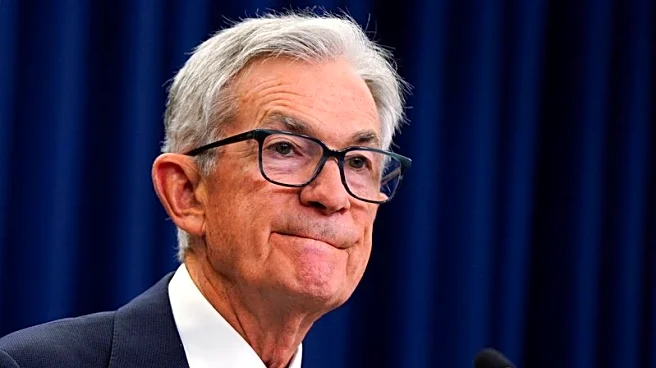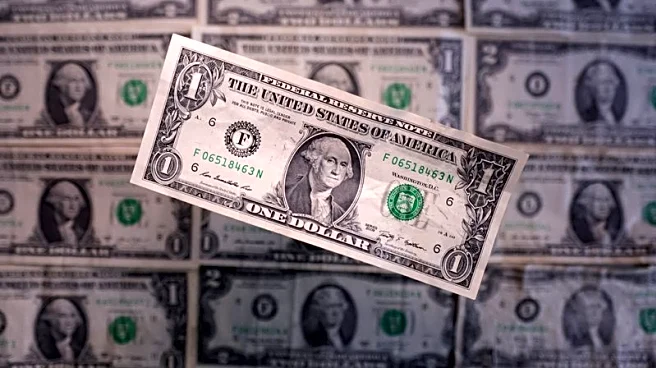What's Happening?
The U.S. dollar experienced significant fluctuations on September 17, 2025, following the Federal Reserve's decision to cut interest rates by 25 basis points. Initially, the dollar fell to a four-year low against the euro but later recovered to trade higher. The Federal Reserve's projections suggest two more rate cuts this year, indicating a shift in focus from inflation concerns to broader economic risks. The decision was supported by Fed officials, including Trump appointees, who had previously dissented on holding rates steady. The dollar's movement reflects market reactions to the Federal Reserve's cautious approach to future rate changes, as emphasized by Fed Chair Jerome Powell.
Why It's Important?
The Federal Reserve's interest rate cut and the subsequent dollar volatility highlight the complex interplay between U.S. monetary policy and global economic conditions. A weaker dollar can impact international trade by making U.S. exports more competitive, but it also affects import prices and inflation. The decision underscores the Federal Reserve's balancing act between supporting economic growth and managing inflationary pressures. The market's response indicates uncertainty about the global economic outlook, with potential implications for international trade and investment flows.
What's Next?
The Federal Reserve's future rate decisions will be closely watched, as they will influence both domestic and international economic conditions. The dollar's performance will continue to be a key indicator of market sentiment and economic health. Analysts and investors will pay attention to upcoming economic data and Federal Reserve communications to assess the likelihood of further rate adjustments. The global economic narrative, including trade policies and growth prospects, will also play a crucial role in shaping market expectations.












